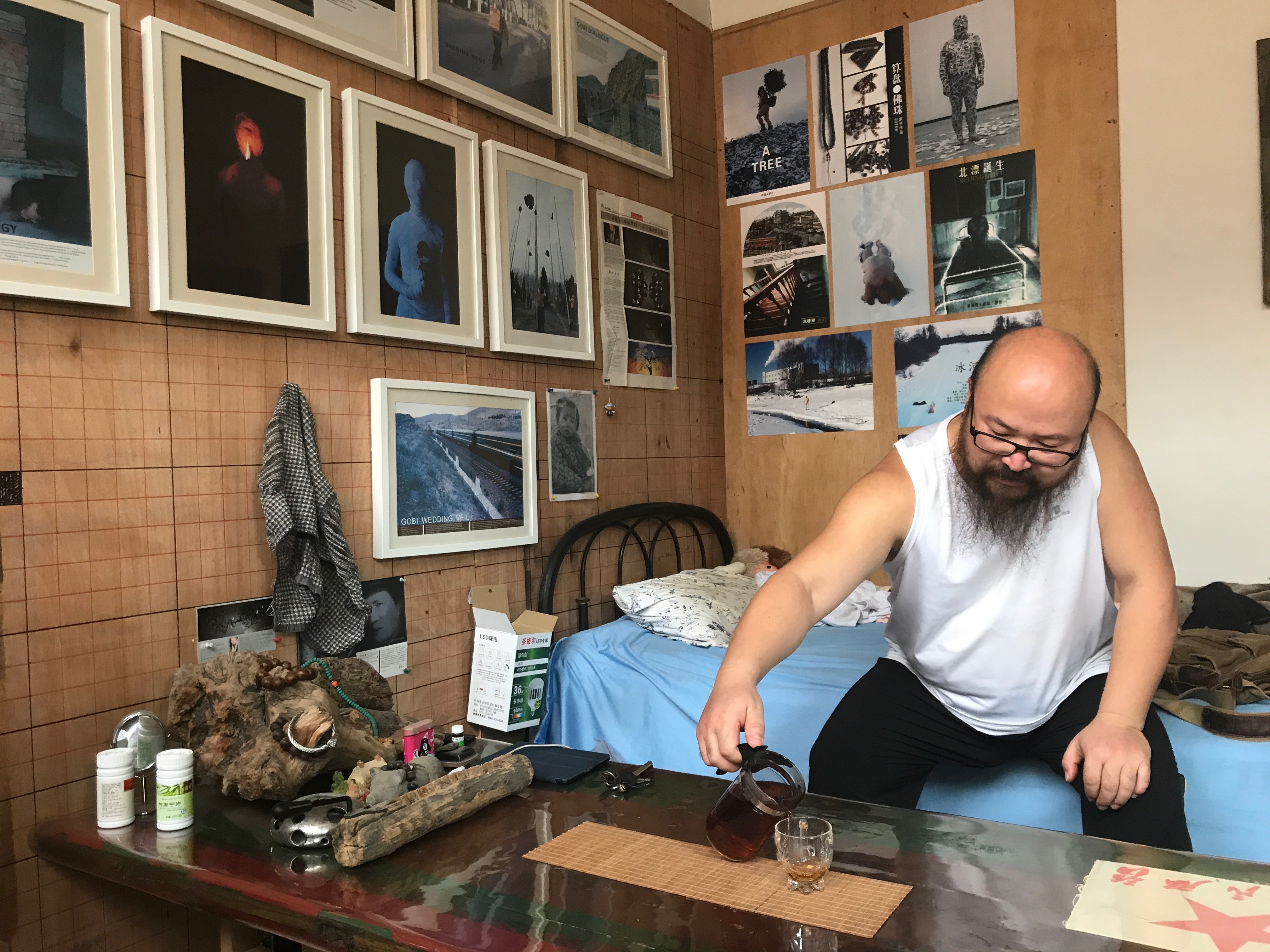“How has your work changed?” I ask Sazi, a performance artist. “My work is increasingly reflective of the real,” says Sazi, smiling above his beard. Slightly rotund but exuding the strength of physical work, Sazi sits on a crumpled blue sheet on his twin bed, clothes strewn and stuffed dolls tucked into the corner. This is his bedroom and also his art studio, in Songzhuang, an art village on the outskirts of Beijing where Sazi has been on and off for the last ten years.
In Sazi’s Gobi Wedding, women wear bridal dresses and stand on the sides of train tracks, visible to passing passengers. The work engages the urban-to-rural migration characterizing the last several decades in China, creating what Sazi calls a “connecting thread” to the hometown. In his Walking in the Bosom of Mother Earth, Sazi walks from Beijing back to his hometown in Xinjiang, eating and sleeping outside on the way. “You’re deeply in nature then” Sazi says. Many people in China don’t live at home and share Sazi’s feeling of homesickness; it’s not like you get back home and then feel the sense of place you’ve been longing for.... on the journey you’ve already returned, he explains. Sazi applied to the Ministry of Culture to show the piece, and was denied, saying he believes it was because performance art is politically sensitive. Was it Xinjiang? Was it invoking a longing for home, interpellating a wide public in sentiments of regret, discontent and nostalgia? Was it glorifying the rural? The past? Sazi said the Chinese government wants traditional work, not this new stuff.
Walking, standing, heaving, moving objects, taking up the body in the expression of life’s big themes, Sazi’s work is stunning, and it’s consistently condemned. Songzhuang artists are no strangers to censorship; their annual film festival is often cancelled at the last minute. Now their very residence in the area is coming under threat; Beijing has recently begun building government housing nearby and the art village, founded in an organic fashion as artists found the place -remote, dusty, poor- suitable for their creative practice (and their budgets), could be demolished any day.

Commentary on Rachel Tanur's Works: US Sign